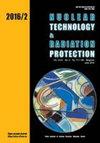安全防护密封系统设计要求实时验证
IF 0.9
4区 工程技术
Q3 NUCLEAR SCIENCE & TECHNOLOGY
引用次数: 0
摘要
为确保和平利用核能,国际原子能机构成员国在《不扩散核武器条约》中实行核保障措施。核保障的两个主要目标是效力和效率。国际原子能机构非常有兴趣使用遏制和监视技术来保持知识的连续性。封闭和监视技术的代表性手段是一个密封系统,以提醒用户篡改。国际原子能机构使用的现有密封系统在实时核查方面效用有限。为了解决这一限制,本研究分析了各种机构提出的密封系统的设计要求,包括国际原子能机构、美国核管理委员会、一些国家实验室和公司。然后,我们确定了该系统的适当设计需求,并进行了实时验证。下一步是根据本文确定和讨论的设计要求开发实时验证密封系统。这一制度预期将大大提高核保障的效率。本文章由计算机程序翻译,如有差异,请以英文原文为准。
Design requirements of safeguards sealing system for real-time verification
To ensure the peaceful use of nuclear energy, nuclear safeguards are applied in member states of the International Atomic Energy Agency the Non-Proliferation Treaty. The two main goals of nuclear safeguards are effectiveness and efficiency. The International Atomic Energy Agency has a great interest in using a containment and surveillance technology to maintain continuity of knowledge. A representative means of a containment and surveillance technology is a sealing system to alert the user to tampering. The existing sealing systems used by the International Atomic Energy Agency are of limited utility for real-time verification purposes. To address this limitation, the present study analyzed the design requirements of a sealing system proposed by various institutions including the International Atomic Energy Agency, the U.S. Nuclear Regulatory Commission, a number of national laboratories, and companies. Then, we identified the appropriate design requirements of this system for real-time verification. The next step is to develop a real-time verification sealing system based on the design requirements identified and discussed herein. Such a system is expected to significantly enhance the efficiency of nuclear safeguards.
求助全文
通过发布文献求助,成功后即可免费获取论文全文。
去求助
来源期刊

Nuclear Technology & Radiation Protection
NUCLEAR SCIENCE & TECHNOLOGY-
CiteScore
2.00
自引率
41.70%
发文量
10
审稿时长
6-12 weeks
期刊介绍:
Nuclear Technology & Radiation Protection is an international scientific journal covering the wide range of disciplines involved in nuclear science and technology as well as in the field of radiation protection. The journal is open for scientific papers, short papers, review articles, and technical papers dealing with nuclear power, research reactors, accelerators, nuclear materials, waste management, radiation measurements, and environmental problems. However, basic reactor physics and design, particle and radiation transport theory, and development of numerical methods and codes will also be important aspects of the editorial policy.
 求助内容:
求助内容: 应助结果提醒方式:
应助结果提醒方式:


